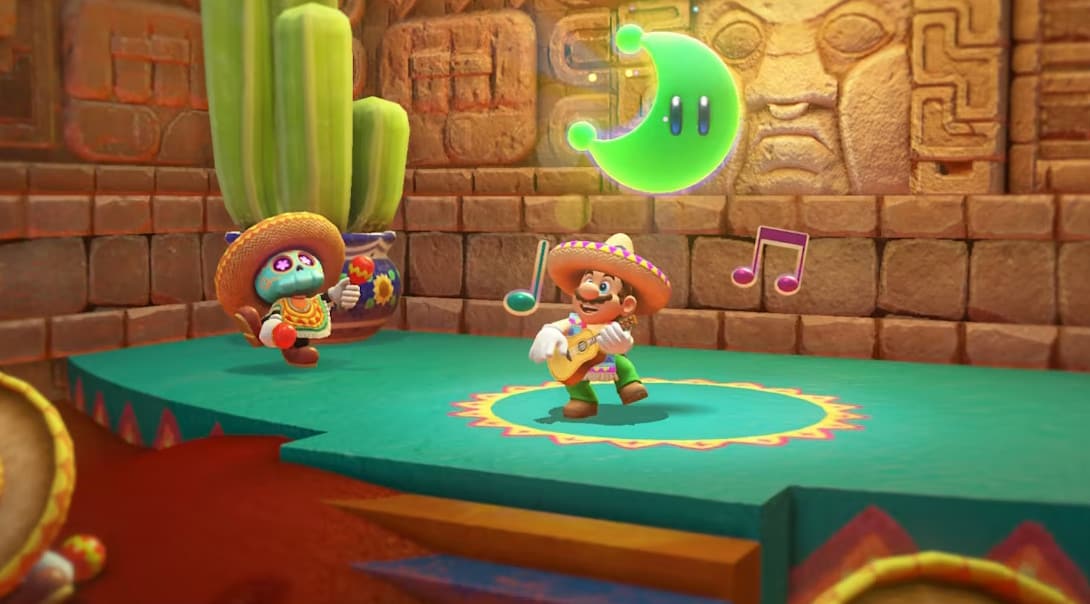Few video game franchises, if any, are more instantly recognizable than the Super Mario series. The iconic plumber and his friends are undisputed legends of the video game industry, and Nintendo, the company that created them, is a titan of the industry. Despite being one of the oldest video game series around, the franchise is going strong to this day, with Super Mario Bros. Wonder set to release this October. While the franchise has had countless spinoffs, and even branched out into movies, TV shows, and amusement parks, the iconic plumber is most famous for his core series of platformers. He has also starred in a series of turn-based RPGs, giving fans a more story-heavy look at the Mushroom Kingdom. Here are the main titles you need to know about to understand the history of this world-renowned plumber.
Super Mario Bros. (1985)
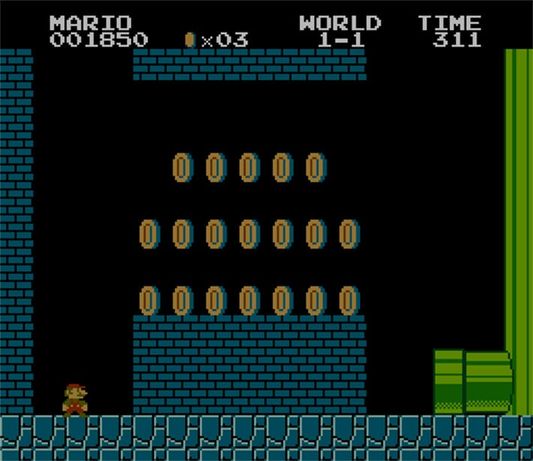
©Screenshot from Super Mario Bros. – License
Super Mario Bros. for the NES marked the character’s first appearance in a side-scrolling platformer. This game established many of the hallmarks of the franchise, including characters like Bowser and Princess Peach, and powerups like the Super Mushroom and Fire Flower. The two-player mode lets a second player take a turn as Mario’s brother Luigi, establishing his legacy too. The significance of this title cannot be overstated, and to this day it remains one of the best-selling video games ever made.
Super Mario Bros: The Lost Levels (1986)
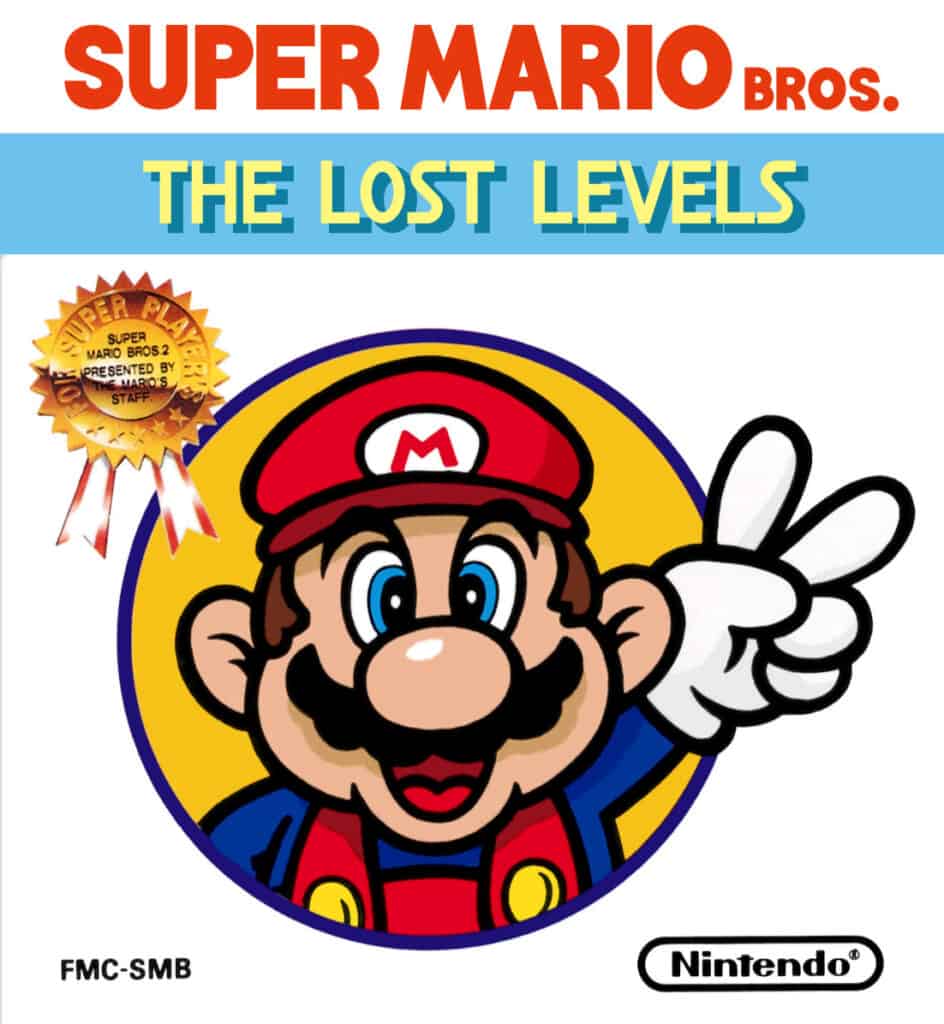
©Super Mario Bros. cover art – License
This game has a bit of a confusing launch history, as it launched in Japan as Super Mario Bros. 2. Additions to character movement and level design made the game significantly more difficult than the original. This made Nintendo wary of releasing it outside of Japan, as the company didn’t want the franchise to gain a reputation for punishing difficulty. Because of this, regions other than Japan wouldn’t see The Lost Levels until 1993, when it launched as part of a compilation game known as Super Mario Bros. All-Stars.
Super Mario Bros. 2 (1988)
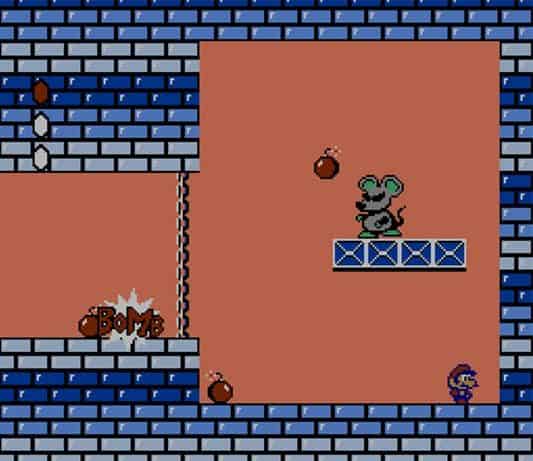
©Screenshot from Super Mario Bros. 2 – License
Though The Lost Levels was officially Super Mario Bros. 2, the rest of the world knows a much different game by that title. This entry was based on an unrelated game called Yume Kōjō: Doki Doki Panic, which was converted into a Mario game for Western markets. As a result, the gameplay of this title is much different from what fans came to expect from the franchise’s early roots. You fight enemies by throwing them at each other, and you can also choose from four different playable characters. Mario, Luigi, Princess Peach (referred to as Princess Toadstool in this installment), and Toad are all options, and each one has different strengths and weaknesses. The plot is another departure — instead of series antagonist Bowser, the heroes of this game face off against Wart the Toad King.
Super Mario Bros. 3 (1988)

©Screenshot from Super Mario Bros. 3 – License
Unlike its direct predecessor, Super Mario Bros. 3 was the same game for everyone. That said, it was not released for everyone simultaneously. This game hit the Japanese market in 1988, but it wouldn’t reach North America until 1990, and Europe wouldn’t get it until 1991. By most accounts, however, it was worth the wait. Super Mario Bros. 3 is considered a highlight of the series, and it has been called one of the best games ever made. The plot, while similar in nature to the first game, introduces the Koopalings, Bowser’s seven children, who serve as the antagonists for Mario’s journey. Now-iconic powerups like the Tanooki suit also make their debut here.
Super Mario Land (1989)
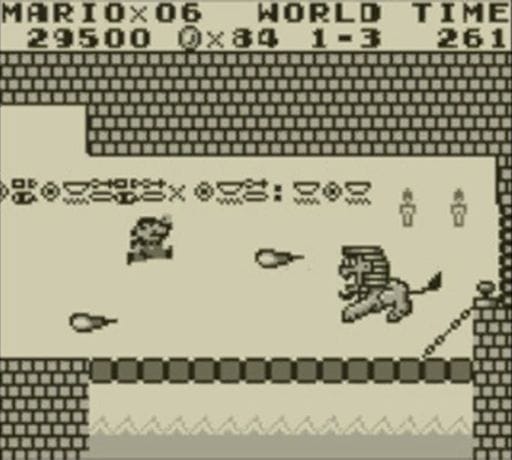
©Screenshot from Super Mario Land – License
Super Mario Land, released for the Game Boy in 1989, was the first handheld platformer in the series. In order to function on this diminished hardware, the scope of the title was brought down considerably from its predecessors. While the game reviewed favorably, the shorter duration was a sticking point for some critics. Story-wise, the game brought the plumber out of the Mushroom Kingdom and took him instead to Sarasaland, home of Princess Daisy. This royal figure made her debut here and has since become a regular fixture in spinoff games.
Super Mario World (1990)
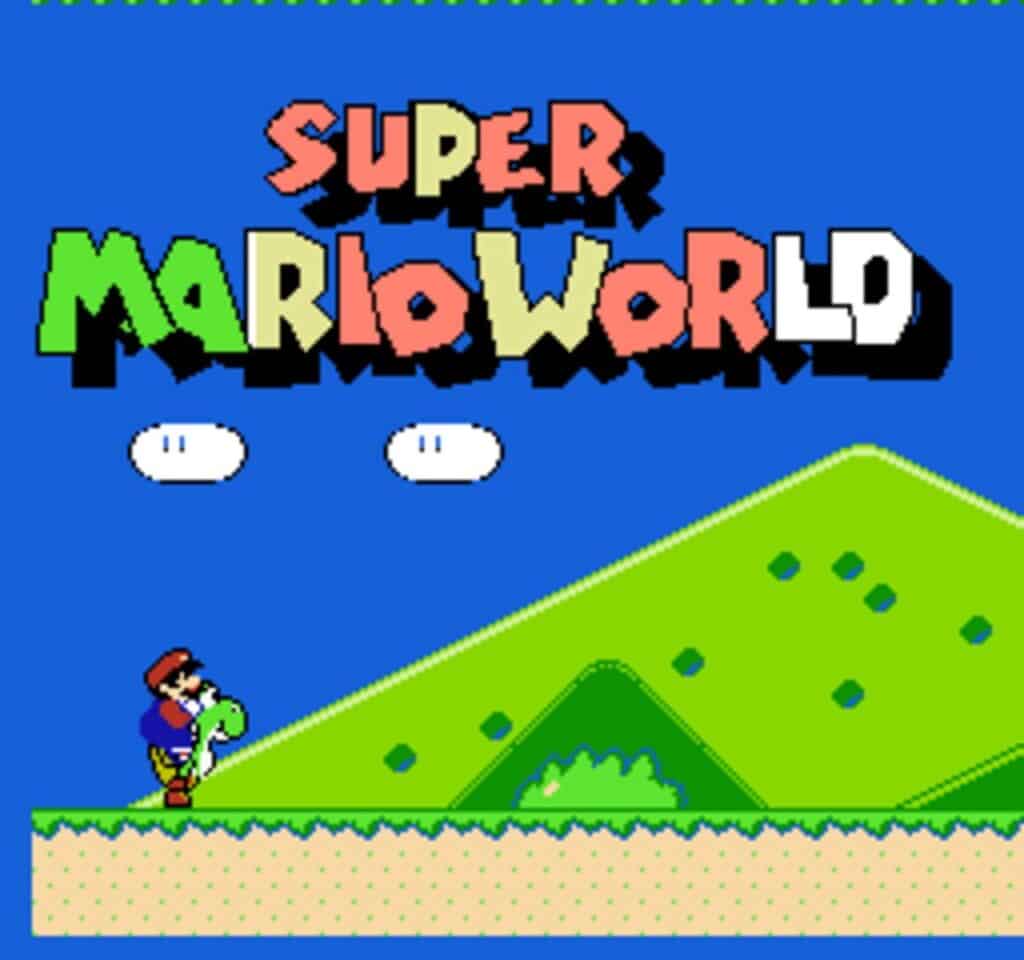
Debuting on the SNES in 1990, Super Mario World is another landmark title for the franchise. It sees our hero journey to Dinosaur Land to once again battle Bowser and his Koopaling children. Most prominent for this title was the debut of Yoshi, Mario’s saurian companion, who serves as a versatile mount and can even devour enemies whole. Yoshi’s inclusion, among many other features, makes Super Mario World one of the best games in the franchise.
Super Mario Land 2: 6 Golden Coins (1992)
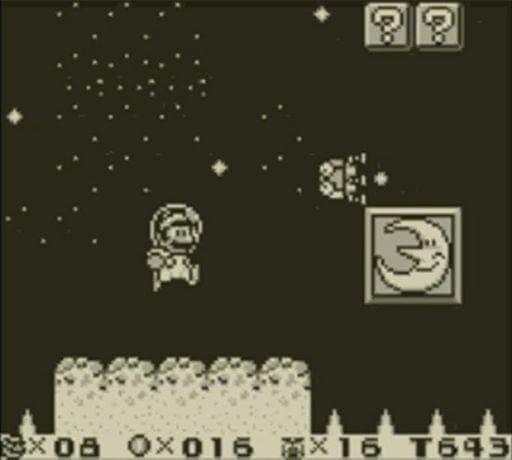
©Screenshot from Super Mario Land 2 – License
The sequel to Super Mario Land was another Game Boy title which is widely considered to be a considerable upgrade over its direct predecessor. Super Mario Land 2 is also noteworthy for its introduction of Wario, a new major antagonist to join Mario’s rogue’s gallery. In this game, Wario steals Mario’s castle out from under him, and the hero must collect the titular coins to re-enter the palace and reclaim it from his rival. Super Mario Land 2 benefited from the advanced level design techniques seen in prior games, and despite the limitations of its handheld hardware, it’s widely considered as another smashing success for the iconic franchise.
Super Mario World 2: Yoshi’s Island (1995)
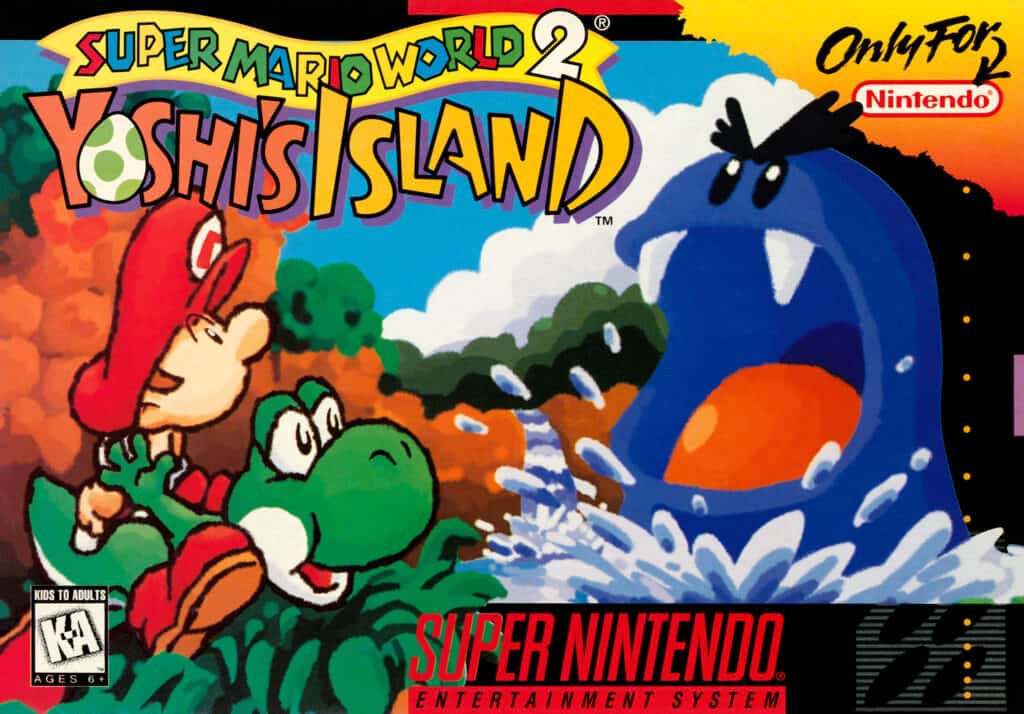
©Cover Art for Super Mario World 2: Yoshi’s Island – License
Yoshi’s Island is a considerable departure for the franchise, released for SNES in 1995. It serves as a prequel of sorts, taking place in the distant past of the series. The plot concerns Kamek kidnapping Baby Luigi, and Yoshi, serving as protagonist instead of powerup, escorts Baby Mario on a quest to rescue his infant brother. Many traits make this title stand out from its predecessors, especially the game’s heavily stylized graphics. Yoshi’s Island is presented with a distinct coloring book aesthetic, with levels and characters designed to look like they’ve been drawn with crayon. This art style earned considerable acclaim, as did the gameplay and level design, and to this day, Yoshi’s Island stands out as a unique success in a long line of acclaimed platformers.
Super Mario RPG: Legend of the Seven Stars (1996)
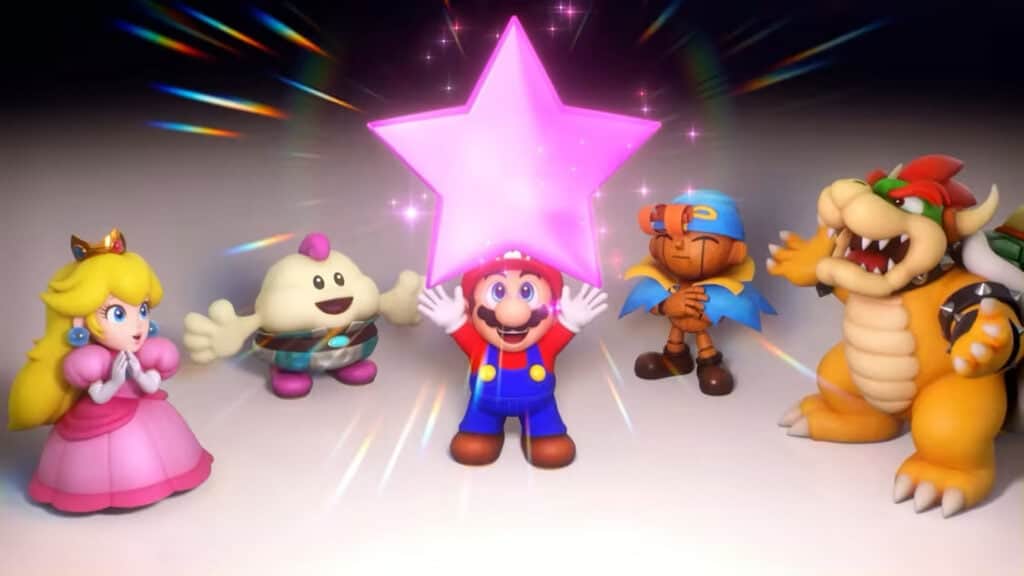
©Screenshot from Super Mario RPG – License
The final Mario game to launch on the SNES was nothing like the platforming titles that had made the plumber famous over the years. As the name indicates, Legend of the Seven Stars was a turn-based RPG, developed by Square of Final Fantasy fame. The game features a distinct isometric camera and exploration with a party of up to three characters, including Mario, Princess Peach, and even Bowser, along with original characters Mallow and Geno. Despite being a huge departure from the platforming the franchise was known for, the game became an instant classic, and a remake will be launching on Switch later this year.
Super Mario 64 (1996)
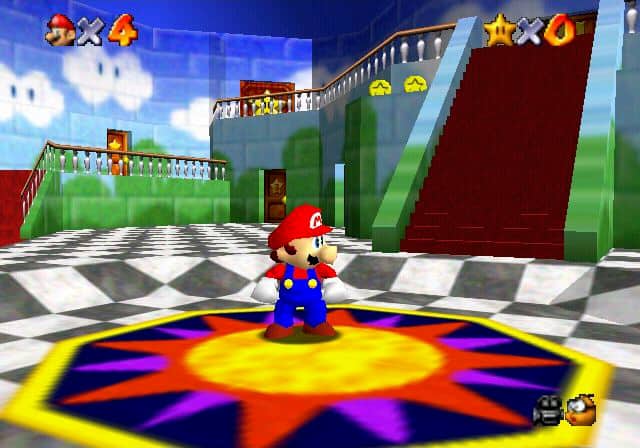
While most of the games on this list are influential in some way, the legacy of Super Mario 64 is in a league of its own. The N64 game was the first fully 3D title in the series. Nintendo took full advantage of this shift, packing the main hub, Princess Peach’s castle, with secrets to reward intrepid explorers with whole new levels to explore. The game was received extremely well, contributing not only to the early success of the Nintendo 64 but to the development of 3D games in general, and to this day it maintains an indisputable position as one of the most historically significant video games in the world.
Paper Mario (2000)
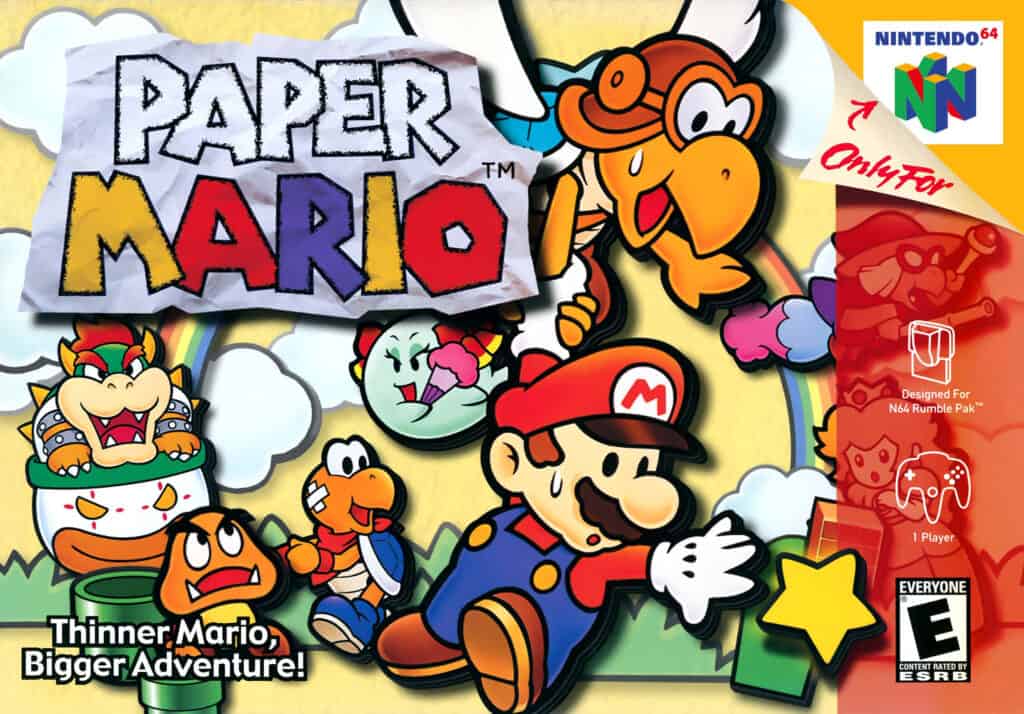
©Paper Mario 64 cover art – License
Following the landmark success of Super Mario 64, a new sub-franchise was born to bring the heroic plumber back to the world of turn-based RPGs. 2000’s Paper Mario introduced a unique art style for the iconic plumber, putting 2D sprites in a 3D world and playing with the idea of a papercraft setting. While the storyline once again revolves around an attempt to rescue Princess Peach from Bowser, the game’s nature as an RPG means there’s room for a more involved storyline. You also have an ever-growing roster of allies on this adventure that aid you both in and out of combat with unique abilities.
Super Mario Sunshine (2002)
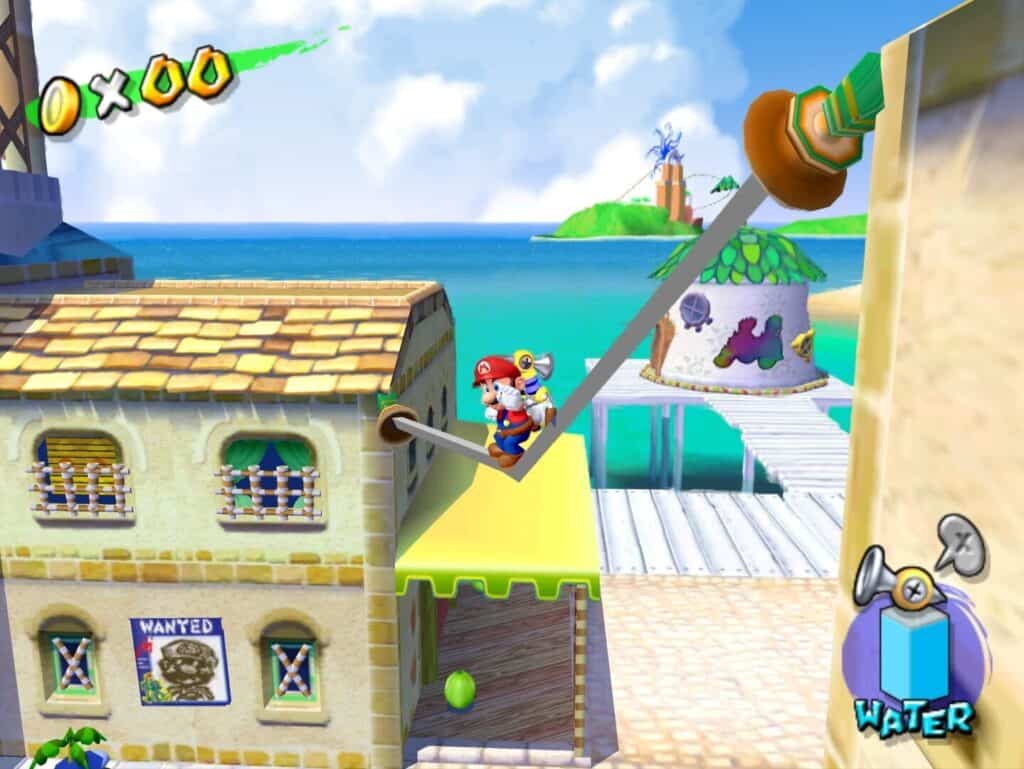
©Screenshot from Super Mario Sunshine
Mario’s next big 3D platforming adventure launched on the GameCube in 2002. Super Mario Sunshine sees Mario journey to Isle Delfino, a tropical paradise which is quickly beset by a mysterious antagonist. The title added a new recurring character to the roster in the form of Bowser Jr., an antagonist who quickly earned a spot in the rogue’s gallery alongside his siblings the Koopalings. The game also introduced F.L.U.D.D., a robotic backpack full of water that you can use to enhance platforming in a variety of ways. It may not have been as much of a genre-defining success as Super Mario 64, but it was still a critical darling, and it remains a fan-favorite.
Mario & Luigi: Superstar Saga (2003)
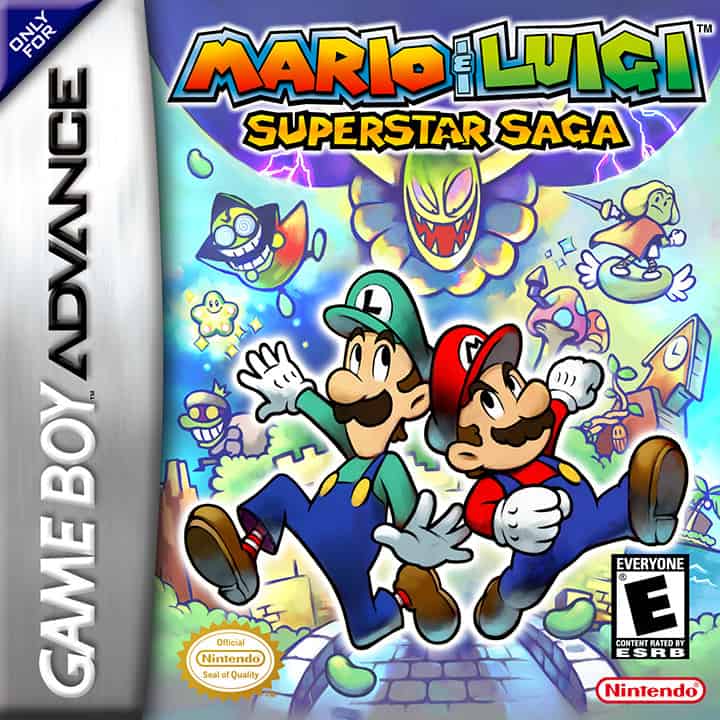
©Cover Art for Mario & Luigi Superstar Saga – License
Paper Mario isn’t the only RPG franchise to star the iconic plumber. The first entry in the Mario & Luigi series, Superstar Saga launched on the Game Boy Advance and revolved around the beloved brothers endeavoring to defeat the villainous Cackletta and Fawful, who have stolen Princess Peach’s voice for their own sinister ends. The game’s comic tone earned high marks from critics, and Mario & Luigi: Superstar Saga also received acclaim for its unique take on turn-based combat, adding special inputs and minigames to keep players engaged.
Paper Mario: The Thousand-Year Door (2004)
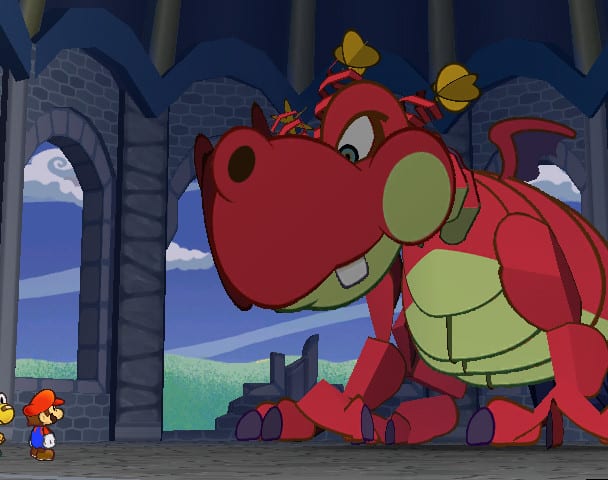
©Screenshot from Paper Mario: The Thousand-Year Door – License
The follow up to 2000’s Paper Mario launched for the GameCube, retaining much of the charm that made the previous game such a success. There were some minor changes to keep things fresh. The Thousand-Year Door added a crowd of spectators to watch Mario’s battles. These audience members periodically influence the fight depending on how Mario’s doing, either by tossing in support items or heckling the hero by throwing damaging rocks. These changes earned the game considerable praise, as did its surprisingly weighty story.
Mario & Luigi: Partners in Time (2005)
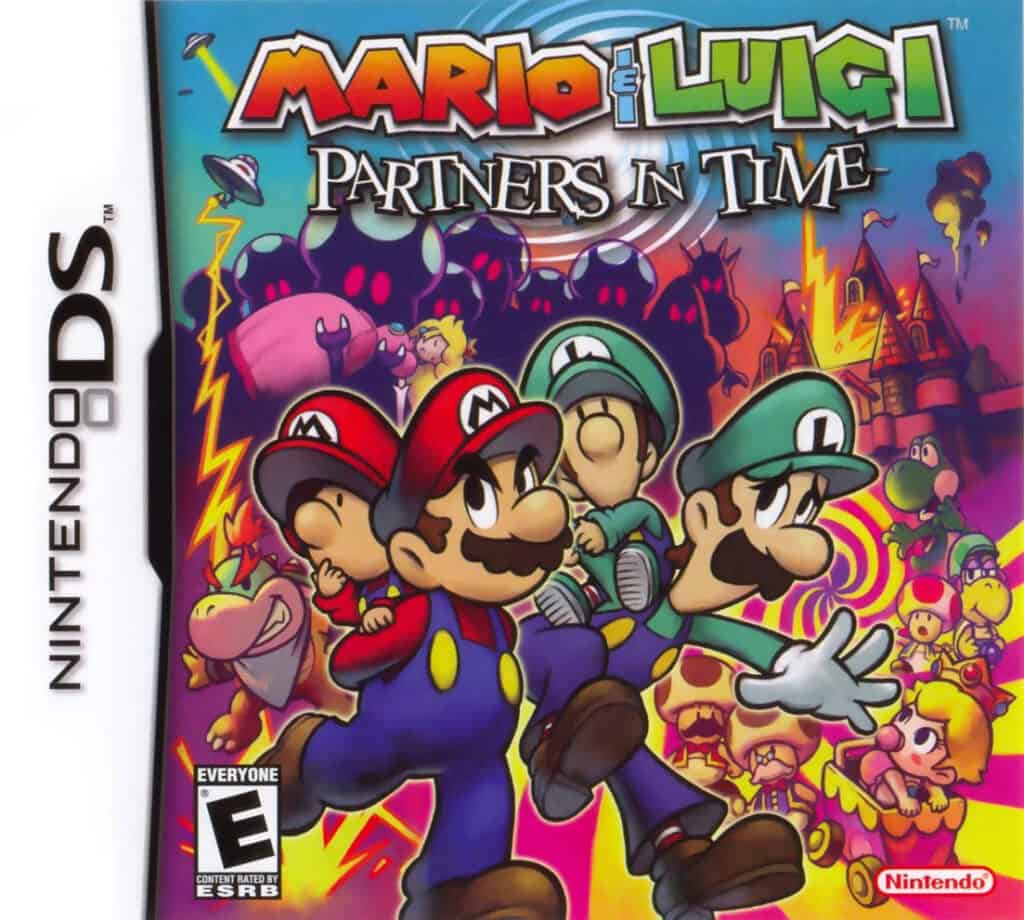
©Mario Luigi Partners Time Box – License
The second Mario & Luigi game shook things up with a time travel element, allowing the titular brothers to team up with their infant selves as portrayed in games like Yoshi’s Island. The game’s launch on the DS also allowed it to benefit from that system’s distinct dual-screen setup, with the Baby Brothers and the adult versions being controlled separately in different environments on different screens.
New Super Mario Bros. (2006)
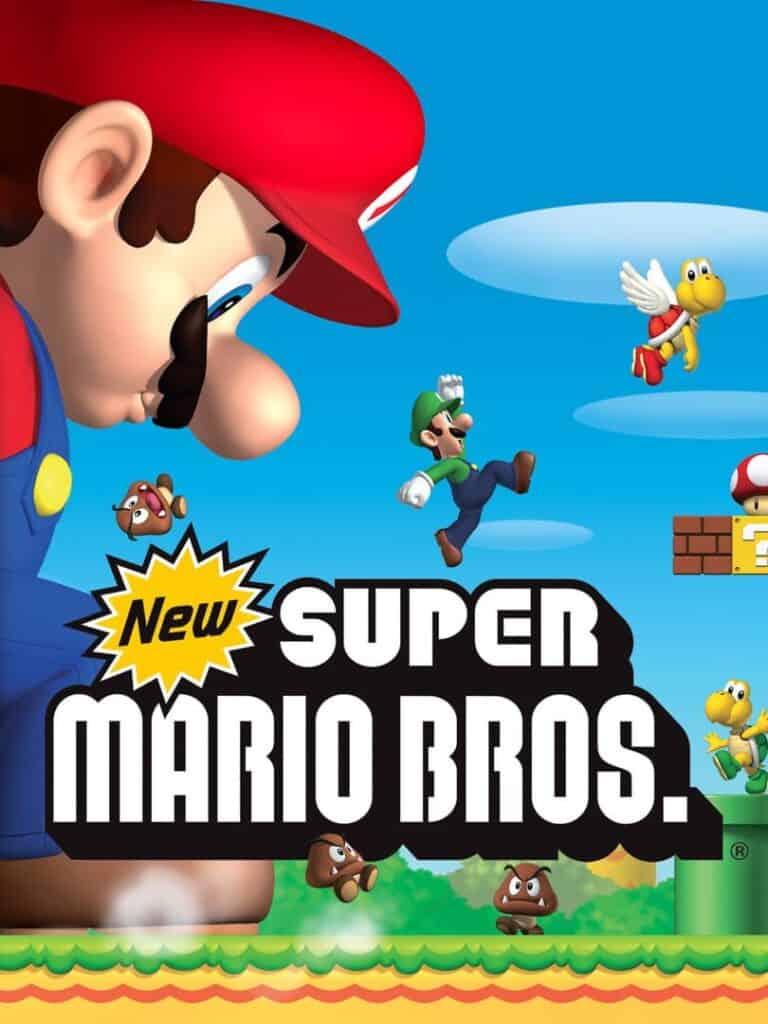
©Cover Art For New Super Mario Bros
The Nintendo DS saw the launch of the first main-series platformer since Super Mario Sunshine. New Super Mario Bros. was something of a return to form, being a 2D platformer like the original titles. While it retained the signature charm of the franchise, it was also noted as being significantly easier than previous platformers, and some felt it played things too safe when compared to its predecessors.
Super Paper Mario (2007)
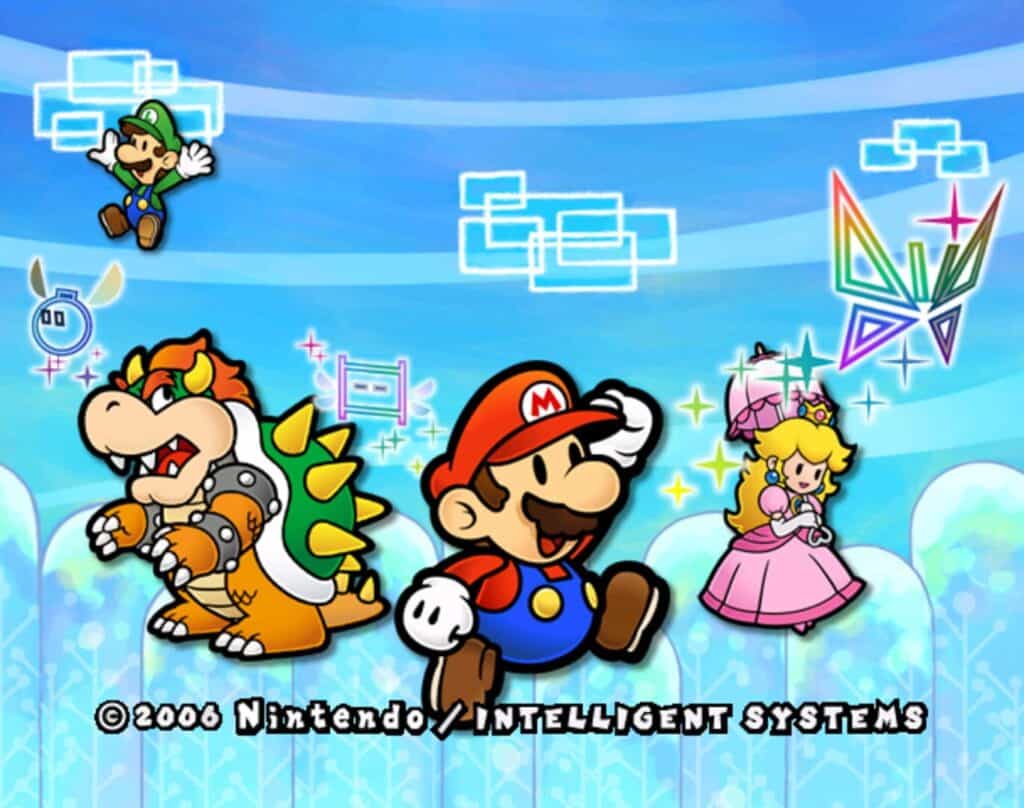
©Screenshot from Super Paper Mario
The Wii’s contribution to the ongoing Paper Mario franchise was a unique twist on the series, removing the turn-based combat the franchise had used for the previous two games. The title’s combat instead blended RPG elements with the traditional platforming of the original Super Mario games. Another unique element of the Wii title is the ability to shift between 2D and 3D perspectives, revealing new paths and secrets depending on how you view your surroundings.
Super Mario Galaxy (2007)
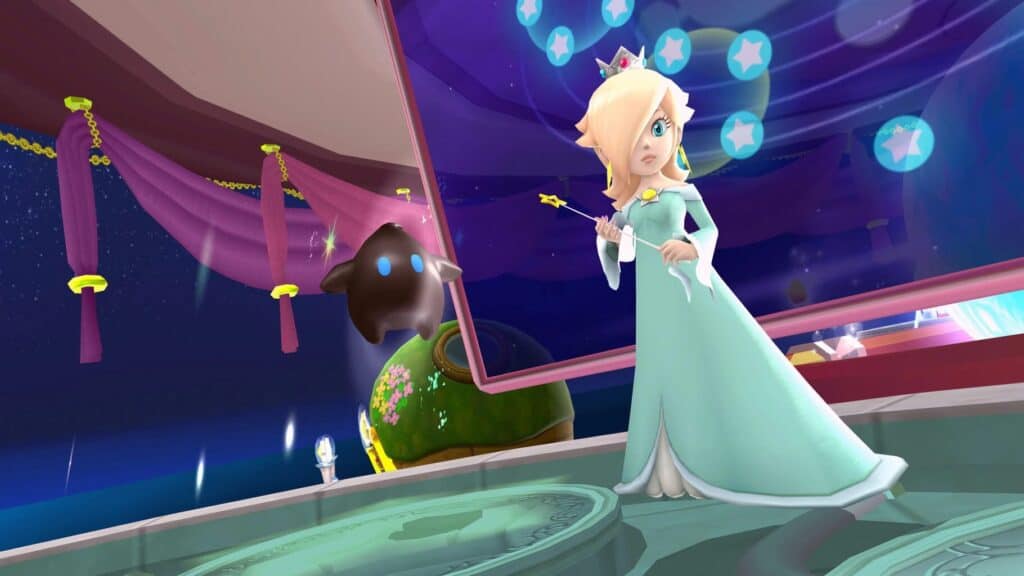
©Screenshot from Super Mario Galaxy
Mario’s third 3D platforming adventure launched on the Wii and sent the iconic plumber into outer space. Super Mario Galaxy used its space theme to toy with gravity in unique ways, and it introduced a host of new powerups like the Bee Suit. It also introduced Princess Rosalina, a mysterious space-bound princess who would go on to become a fan favorite. This game was a major success for the franchise and was received extremely well.
Mario & Luigi: Bowser’s Inside Story (2009)
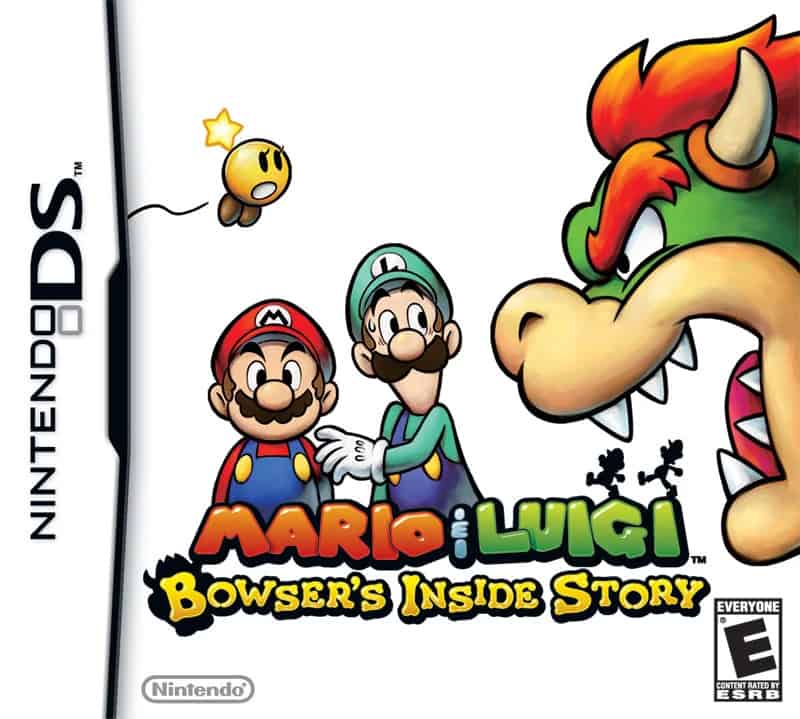
©Cover Art for Mario & Luigi: Bowser’s Inside Story – License
The next Mario & Luigi game for the DS would continue the series’ tradition of strange gimmicks by putting the brothers inside their nemesis Bowser for the majority of the game. By influencing and even assisting the Koopa King from within, the plumbers are able to aid him in fighting Fawful, who returns from Superstar Saga to wreak havoc once again. This unique approach earned the game high marks.
New Super Mario Bros. Wii (2009)
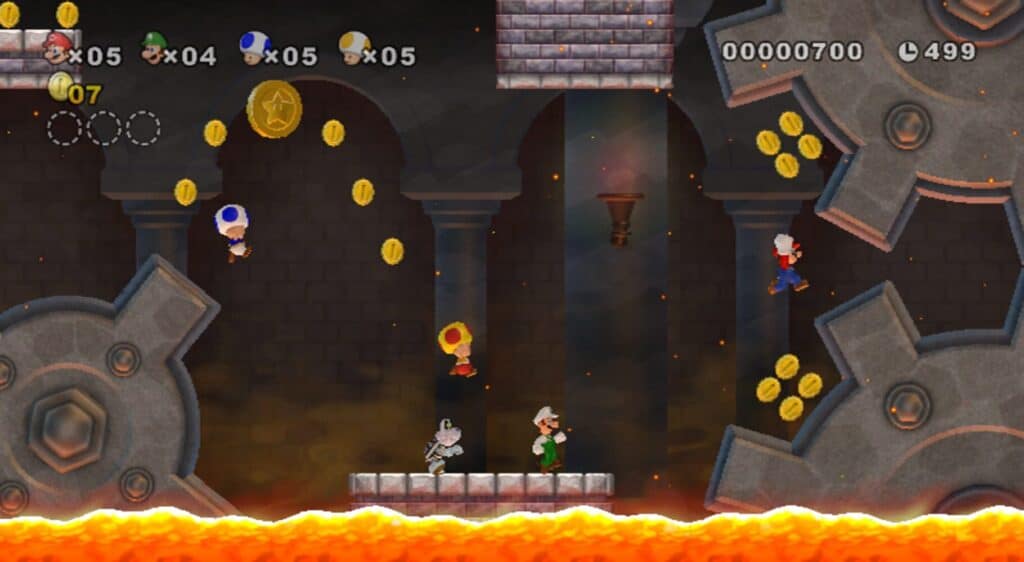
©Screenshot from New Super Mario Bros. Wii
The second New Super Mario Bros. game launched, as the name suggests, for the Nintendo Wii. In a first for the platformer franchise, it features simultaneous multiplayer, allowing up to four players to take on the game together. The game got a fair bit of praise for this, but, like its 2006 predecessor, many fans felt it could have done more to shake up the formula.
Super Mario Galaxy 2 (2010)
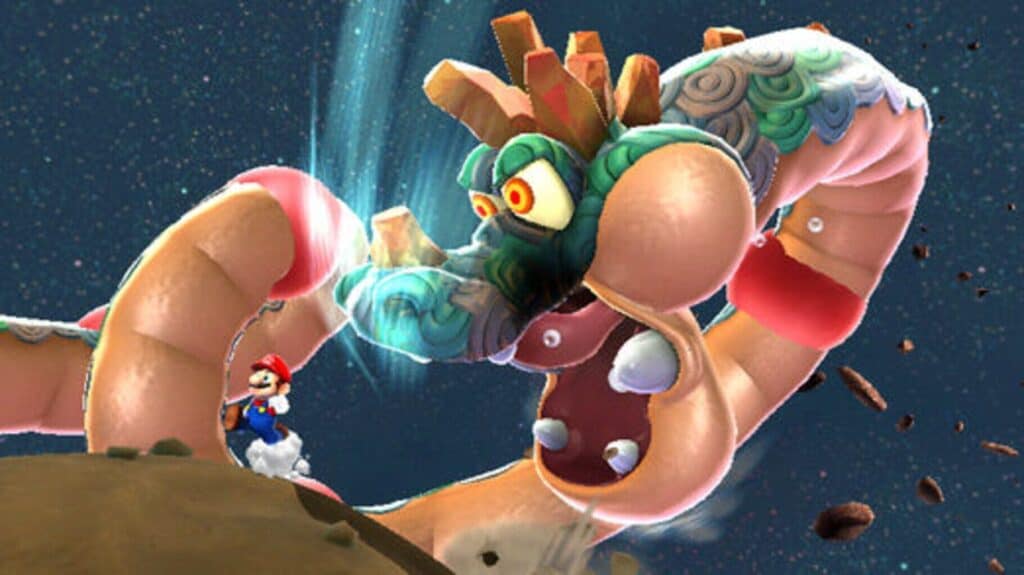
©Screenshot from Super Mario Galaxy 2
The considerable success of Super Mario Galaxy earned it a direct sequel three years later. The Wii title shook up the first game’s mechanics in a number of ways, most prominently by adding Yoshi. Some fans were let down by the removal of the immersive hub world from the first game, but on the whole, it was considered a great success, with some calling it an even better game than its predecessor.
Super Mario 3D Land (2011)
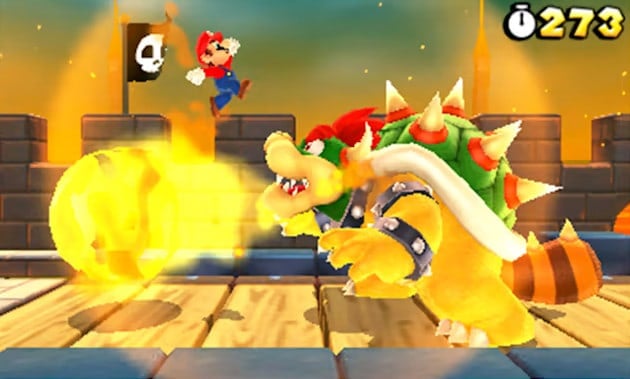
©Screenshot from Super Mario 3D Land – License
The next 3D Mario platformer launched for the Nintendo 3DS in 2011, the first game in the franchise released for the new handheld. Super Mario 3D Land took a unique approach to its level design, blending traditional elements from the 2D games with the 3D design of games like Super Mario 64. This distinctive design made it a standout title, and it was a boon for the popularity of the 3DS as well.
New Super Mario Bros. 2 (2012)
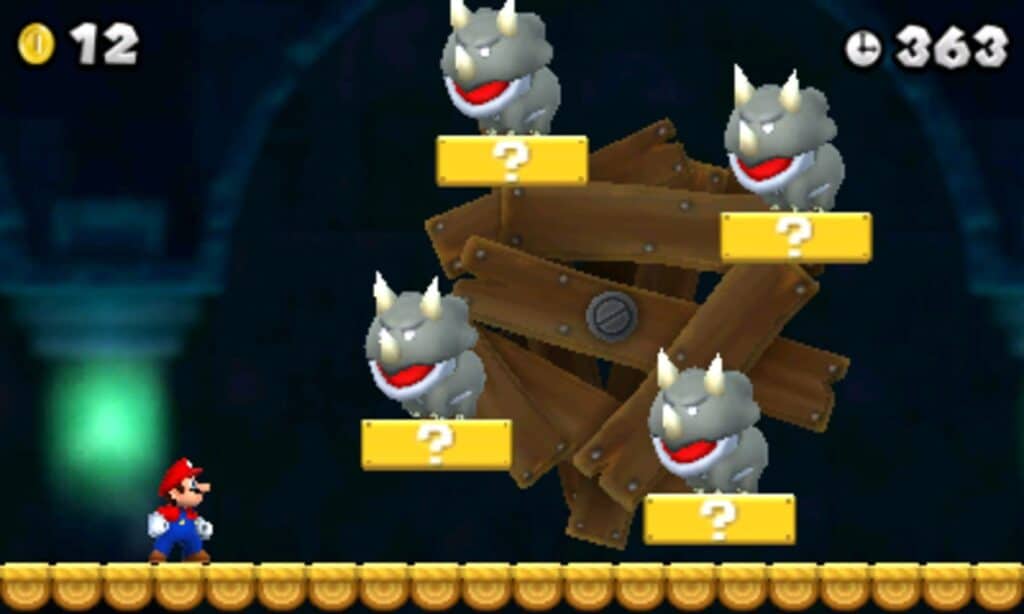
©Screenshot from New Super Mario Bros. 2
Despite being the third game in the sub-series, New Super Mario Bros. 2 carried the title as a direct sequel to the first game when it launched on the 3DS in 2012. In addition to the traditional hallmarks of a 2D Mario game, the 3DS title featured a heavy emphasis on coin collecting. Like previous entries, it was also criticized for a lack of innovation.
Paper Mario: Sticker Star (2012)
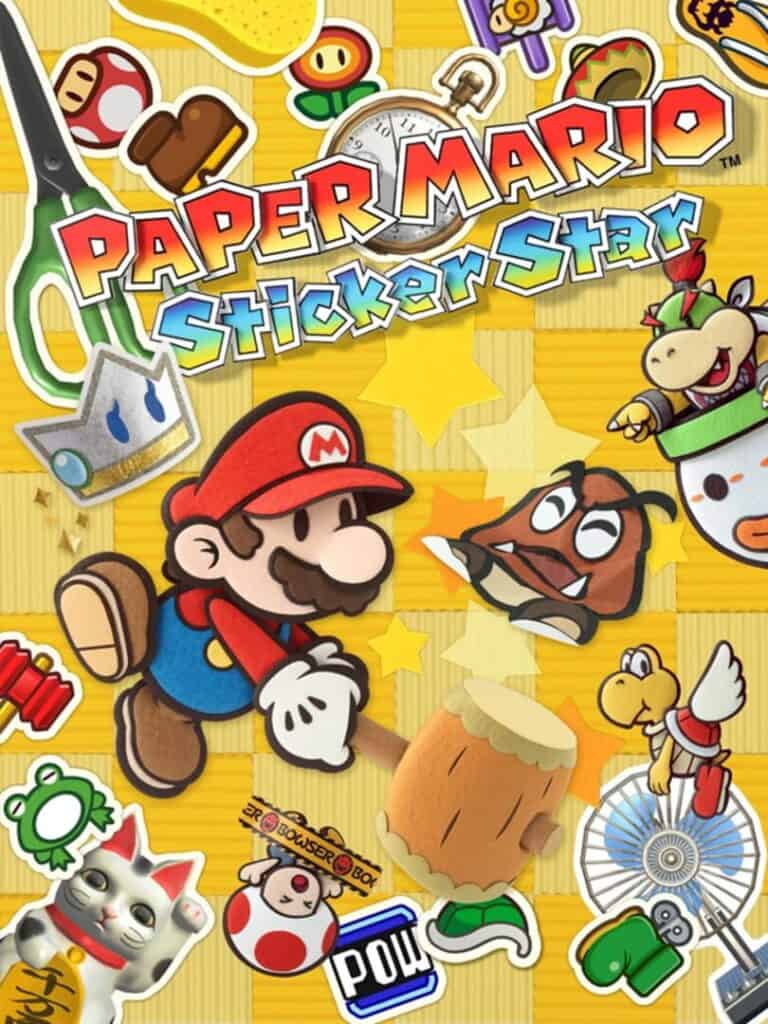
©Cover art from Paper Mario: Sticker Star
As the name indicates, the 3DS’ contribution to the Paper Mario franchise features a heavy emphasis on collecting and utilizing stickers. These stickers determine what actions you can take in combat. The sticker system received a mixed reception when it debuted; some fans felt it detracted from the RPG design that had made the series special. Still, the new game earned decently high marks overall.
New Super Mario Bros. U (2012)
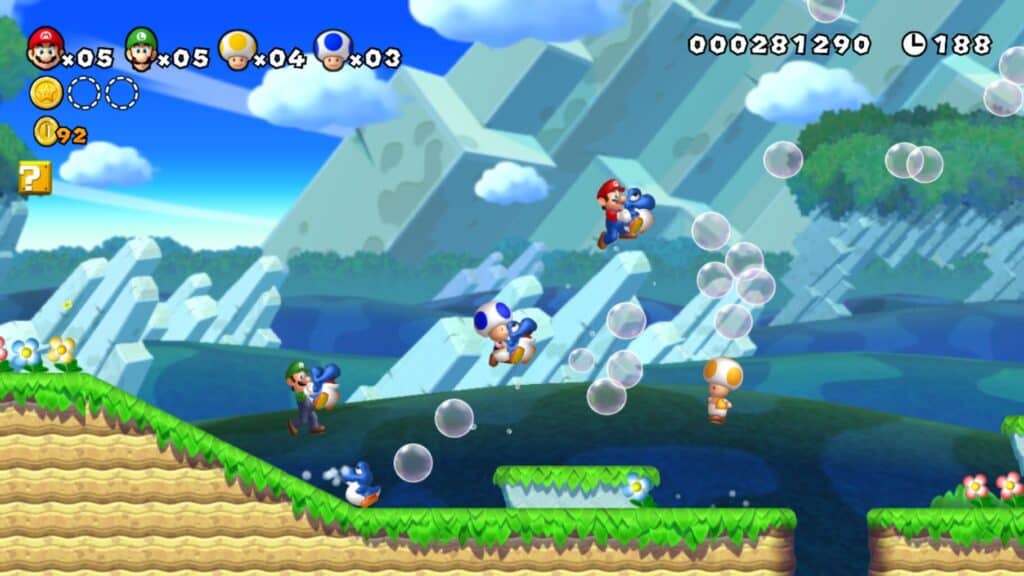
©Screenshot from New Super Mario Bros. U
The Nintendo Wii U launched with New Super Mario Bros. U, which would prove to be the final entry in the sub-series. Like its predecessor on the Wii, this title includes multiplayer functionality. Thanks to the Wii U gamepad, up to five players can enjoy the title, with the fifth interacting with the environment by conjuring blocks and stunning enemies. As part of the promotional “Year of Luigi” campaign, the game also featured a DLC expansion called New Super Luigi U, focusing on the heroics of the green-clad plumber himself.
Mario & Luigi: Dream Team (2013)
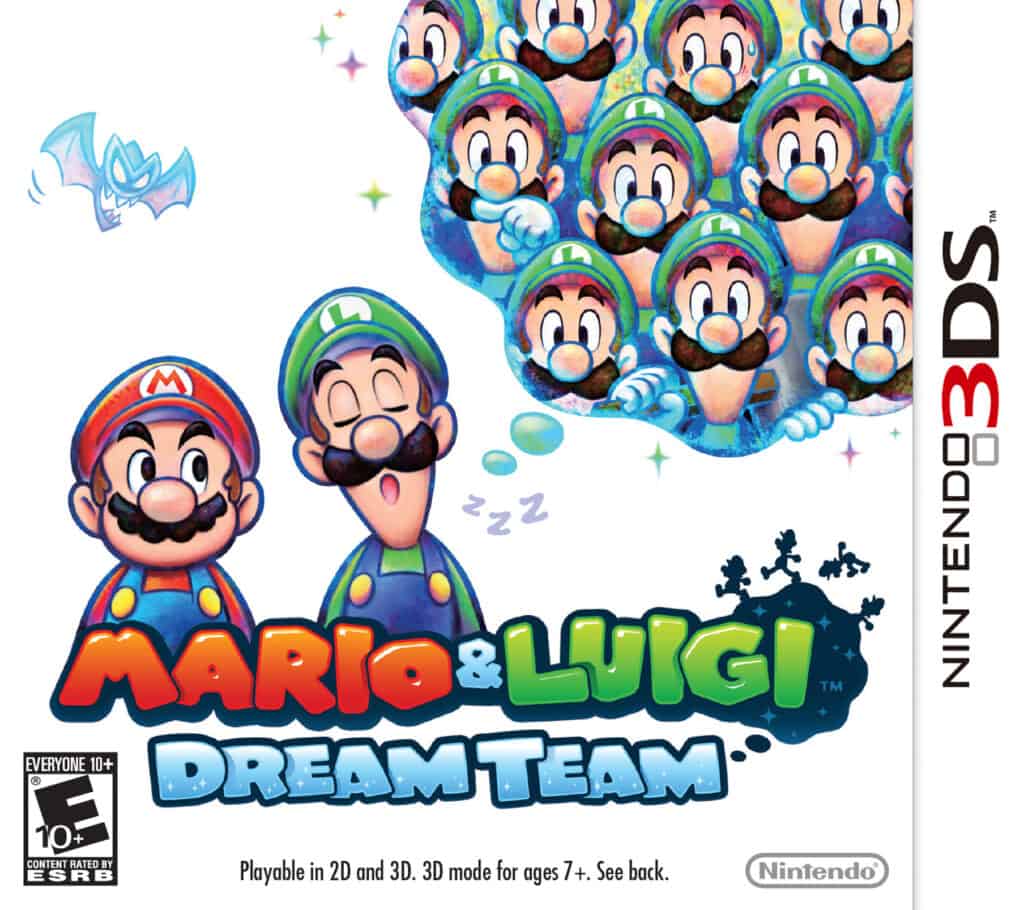
©Cover Art from Mario & Luigi: Dream Team – License
The 3DS had Mario & Luigi: Dream Team, another inventive take on the traditional turn-based RPG formula. Dream Team sees Mario journeying into Luigi’s dreams to gain the assistance of his brother’s subconscious. The decision to focus on Luigi in dreams coincided with the aforementioned Year of Luigi celebration in an attempt to give the younger brother more attention and recognition.
Super Mario 3D World (2013)
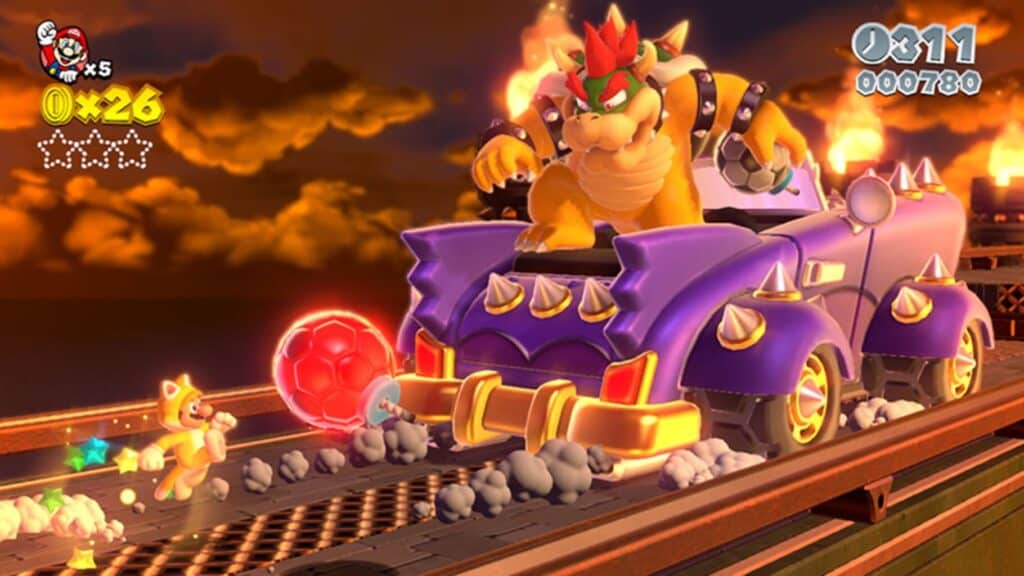
©Screenshot from Super Mario 3D World
Like 2011’s Super Mario 3D Land, this Wii U title blends the original games’ 2D sensibilities with 3D level design. Its remarkable level design, multiplayer, immense replayability, and the introduction of the now-famous cat-themed Super Bell made this game a considerable success and a flagship title for the Wii U.
Super Mario Maker (2015)
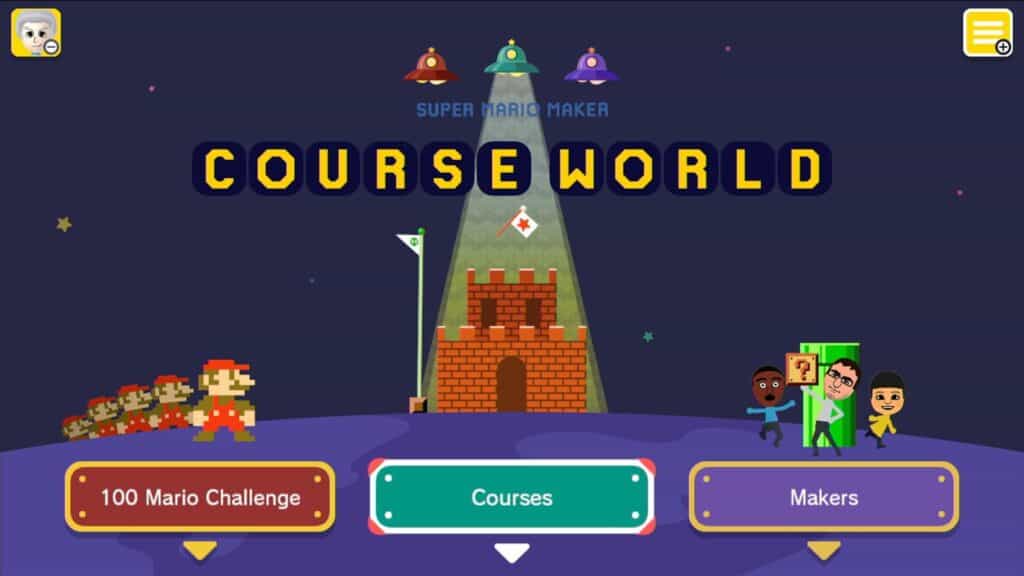
©Screenshot from Super Mario Maker
This Wii U game took a very unique approach to the tried and true 2D Mario formula by inviting players to freely build their own levels. With nearly all of the items and design elements that had made the franchise such a success at their fingertips, players ran wild, producing creative levels that pushed the boundaries of the series to their very limits.
Mario & Luigi: Paper Jam (2015)
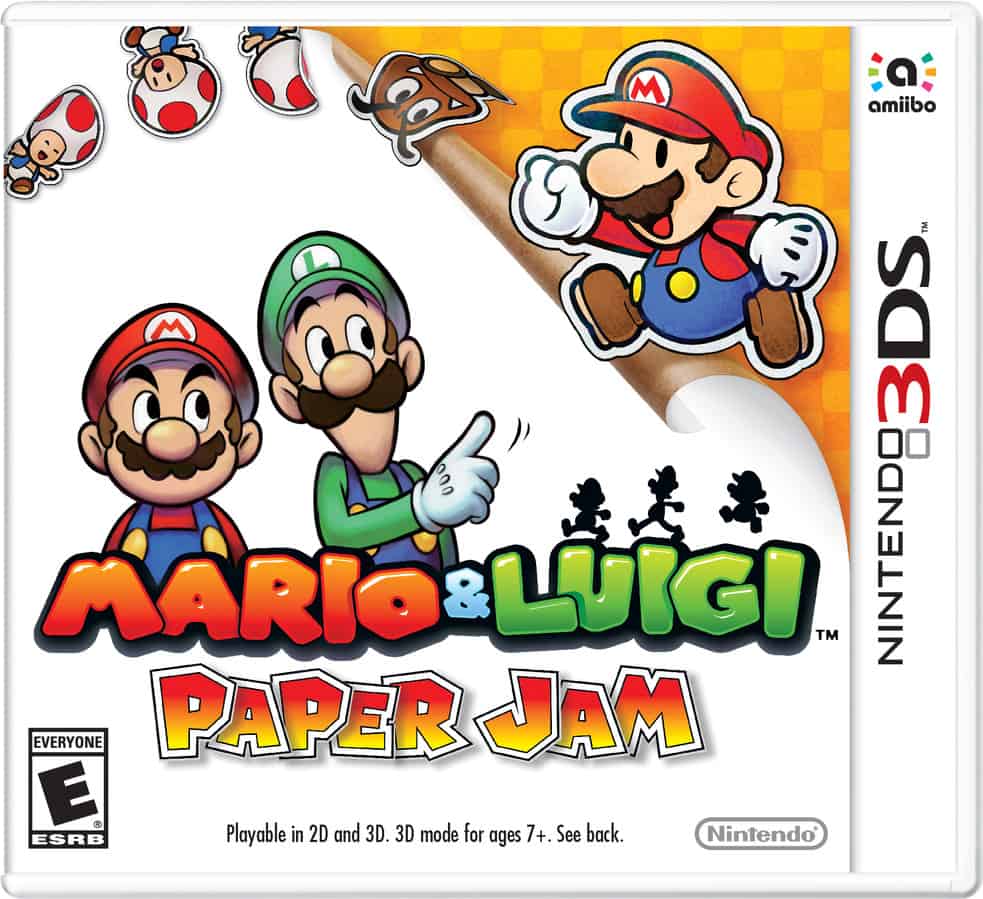
©Cover Art from Mario & Luigi: Paper Jam – License
As the name suggests, this 3DS game combined the two prominent Mario RPG franchises into one collaboration. The game sees Luigi accidentally unleash the Paper Mario universe into the Mushroom Kingdom; subsequently, the two brothers team up with Paper Mario himself to rescue Princess Peach from Bowser and Paper Bowser. This collaboration led to a refreshed combat system that fans of the series generally enjoyed.
Paper Mario: Color Splash (2016)
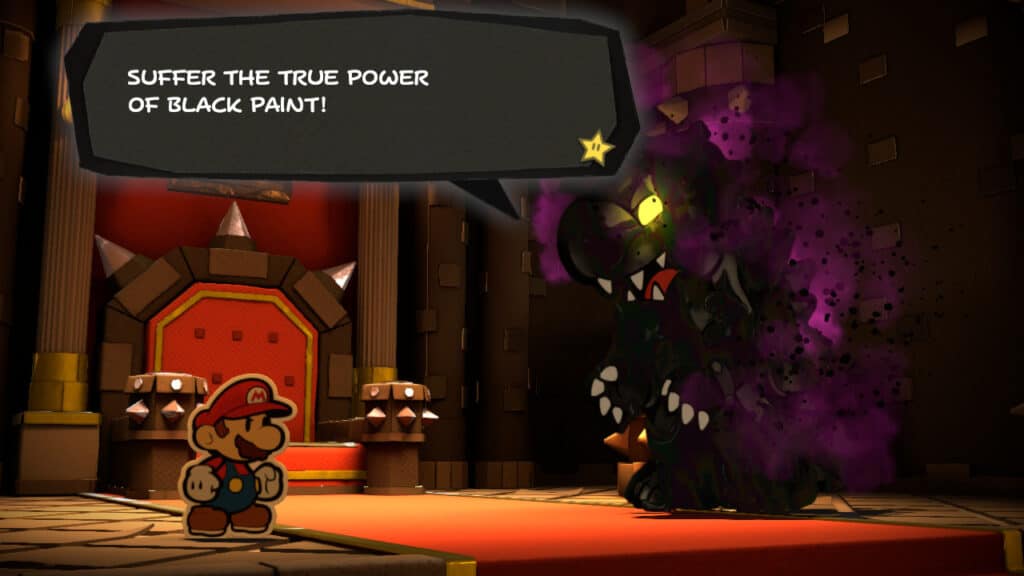
©Screenshot From Paper Mario: Color Splash – License
While the Mario & Luigi series has had no new entry since the prior year’s collaboration, Paper Mario has persisted. Wii U’s Color Splash revolves around a painting gimmick, as the name suggests, and toned down the RPG elements to keep it distinct from Mario & Luigi. This drew negative reactions from some fans, while others praised the game’s presentation and gameplay.
Super Mario Run (2016)
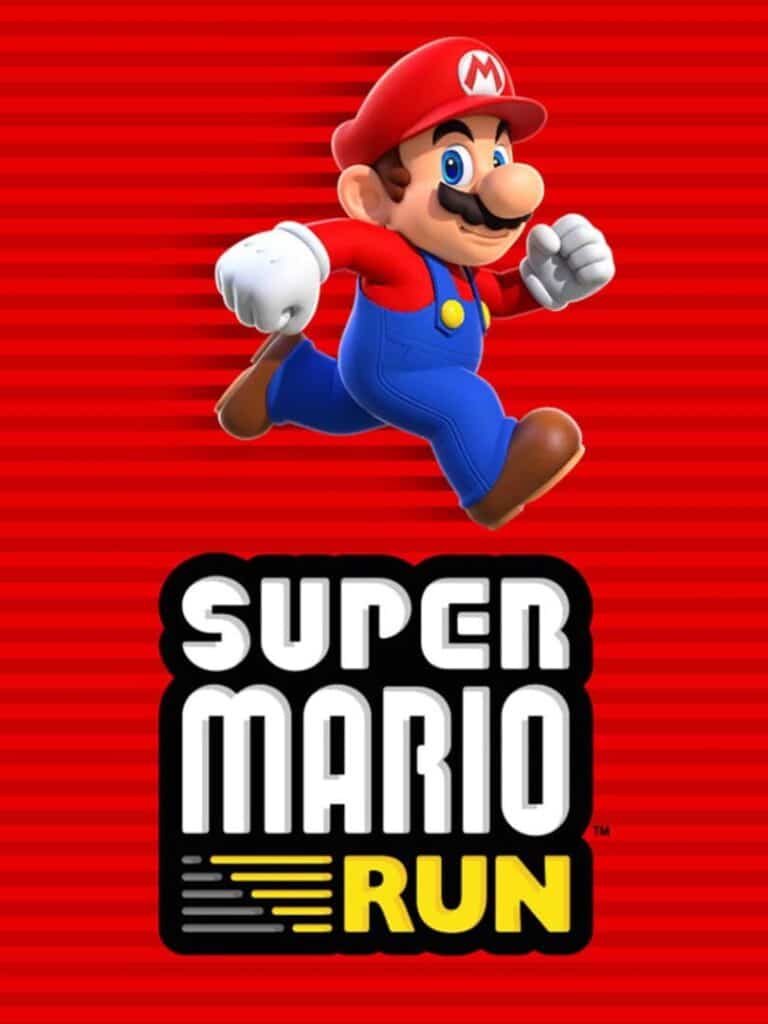
©Cover Art For Super Mario Run
Super Mario Run stands out as the only Super Mario game on mobile systems. It launched on the app store in 2016 and functions as an autorunning platformer. The game was controversial for its monetization system, offering the first three levels for free before requiring a one-time payment for the rest of the game. While the microtransactions that plague the rest of the mobile gaming space are absent, this paywall still drew ire from fans, especially since the $10 price point was considerably higher than other mobile titles. While the gameplay itself was generally well-received, this controversy prevented Super Mario Run from ever becoming as much of a big name as its fellow platformers.
Super Mario Odyssey (2017)
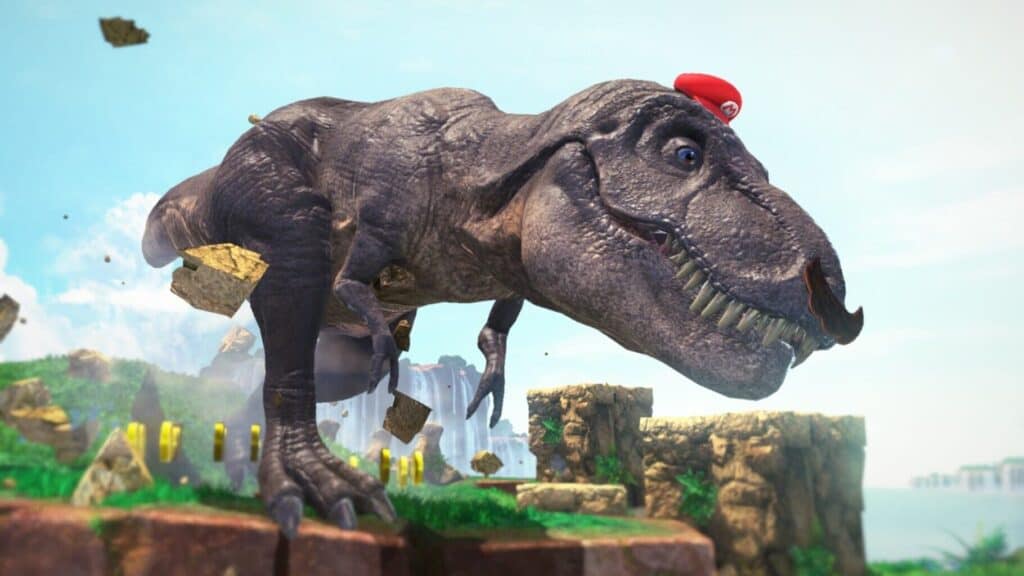
©Screenshot From Super Mario Odyssey
This flagship Nintendo Switch title made a massive impact when it launched in 2017. With a return to the open-ended level design of Super Mario 64, Odyssey quickly earned a reputation as one of the best Mario games on the market. The title famously eschewed traditional powerups in favor of a new companion named Cappy, a sentient hat that allows you to possess enemies and use their abilities to navigate the world. The vibrant level design and staggering wealth of content will likely ensure Odyssey a place in the history books for years to come.
Super Mario Maker 2 (2019)
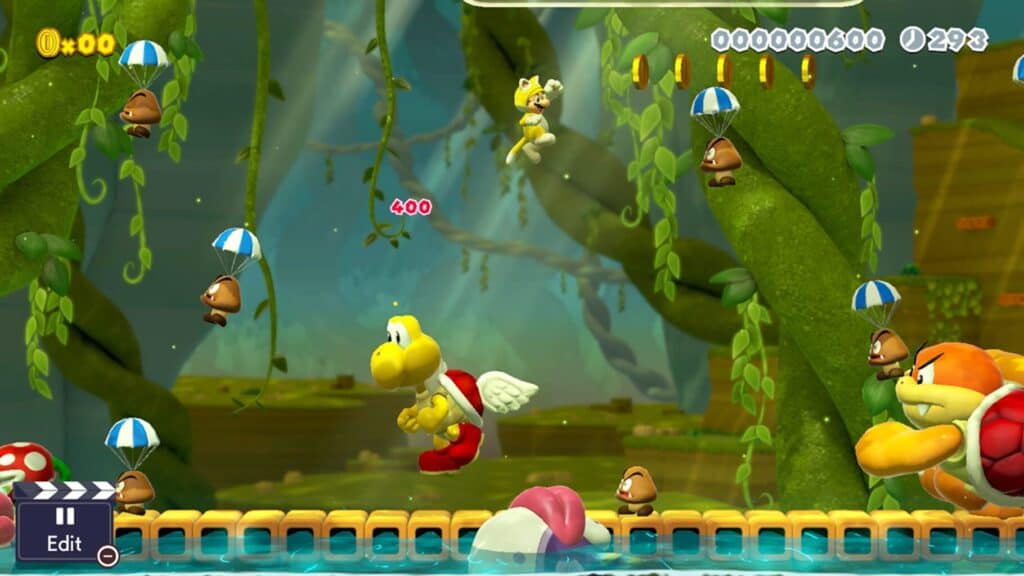
©Screenshot From Super Mario Maker 2
Like its Wii U predecessor, Super Mario Maker 2 allows players to create their own 2D levels using assets from across the franchise’s rich history. The Switch game stands out from the original by offering assets from Super Mario 3D World. Thanks to that game’s reliance on 2D design philosophies, its elements transfer well to the game’s 2D space. While the novelty of the concept has worn off slightly since the original title, Super Mario Maker 2 was still a considerable success.
Paper Mario: The Origami King (2020)
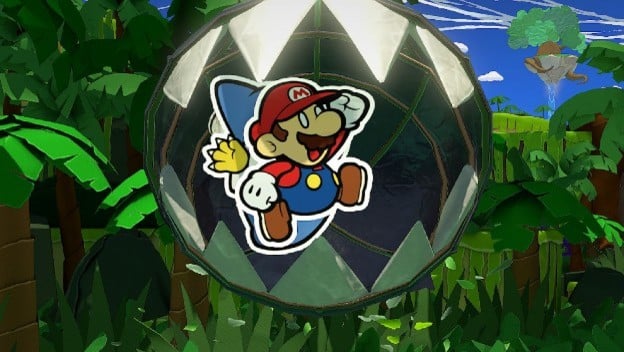
©Screenshot From Paper Mario: The Origami King
While fans bemoan the Paper Mario franchise’s continued shift away from its RPG roots, Origami King still received critical acclaim when it launched for the Switch in 2020. The plot concerns the evil King Olly, the titular Origami King, who intends to convert the entire Mushroom Kingdom into Origami. The game’s distinctive combat system, which requires the player to line up rings in order to maximize their turn, has earned mixed responses from critics and fans.
Bowser’s Fury (2021)
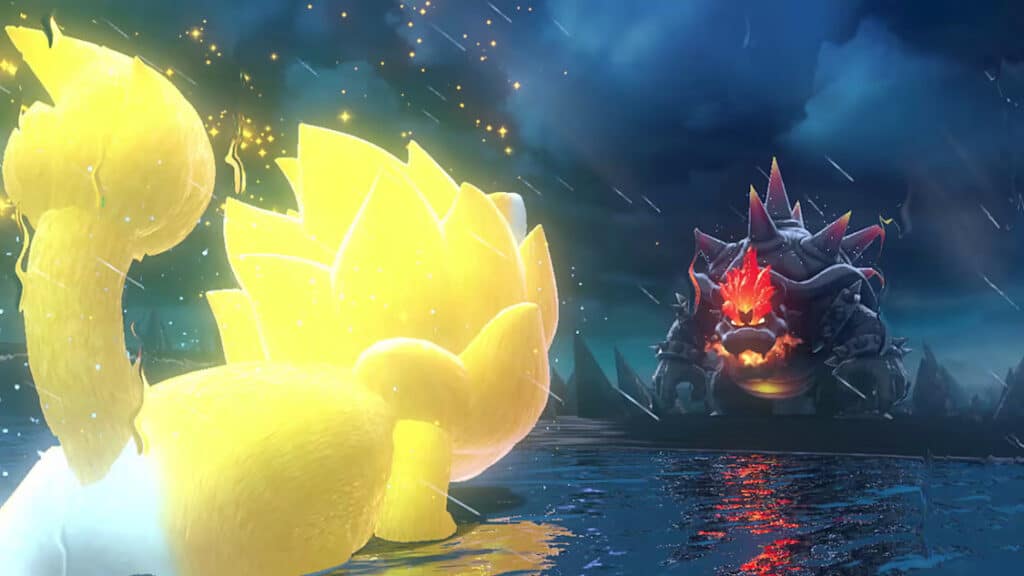
©Screenshot From Bowser’s Fury – License
The most recent Mario platformer, Bowser’s Fury comes packaged with a rerelease of Super Mario 3D World for the Nintendo Switch. The standalone game takes heavy gameplay inspiration from that title, but sets the entirety of the action in Lake Lapcat, a self-contained region with several levels in islands throughout the lake. The area is being terrorized by Bowser, who has grown to immense size due to sinister black goop that infests the lake. Bowser’s Fury received immense praise for its open-ended level design, but it is also an incredibly short game, due to its nature as a standalone expansion for 3D World.
Mario Golf (2021)
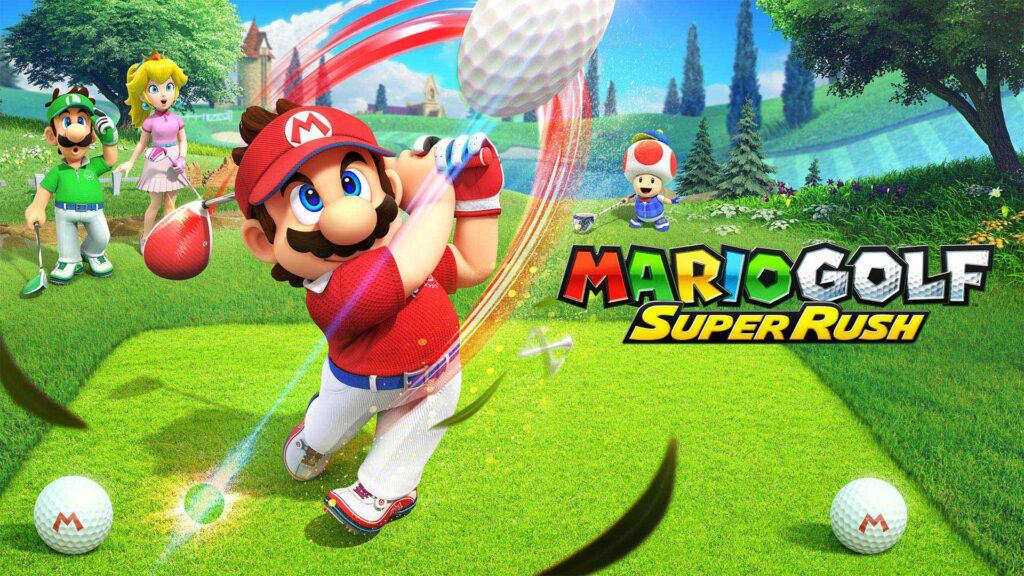
©Cover Art For Mario Golf
Mario Golf is a Nintendo golf game featuring characters from the Mario universe. Players can choose their favorite characters, each with unique abilities, to play through various whimsical courses. The game combines traditional golf mechanics and includes imaginative twists, like offering modes that range from serious golfing to more fantastical, power-up-laden matches. The courses are creatively designed, incorporating elements from the Mario world, and like most Mario games epmhasizes fun and accessibility over strict simulation, and can be fun for all ages.
Mario Party Superstars (2021)
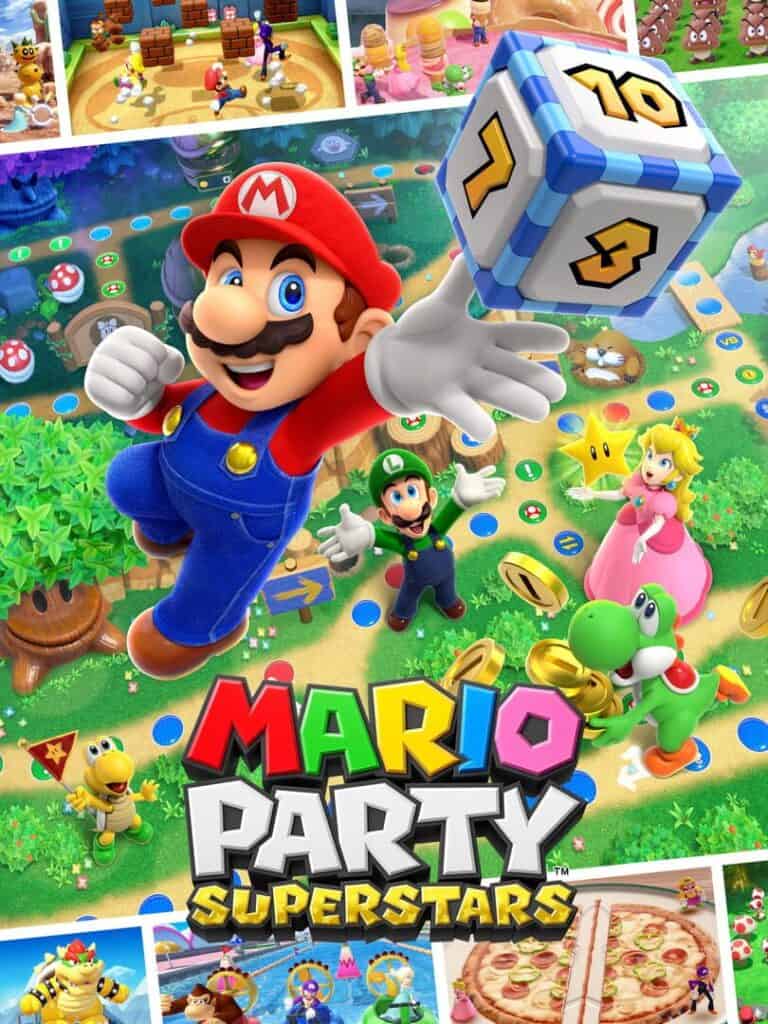
©Cover Art for Mario Party Superstars
This is a festive and engaging party game that revitalizes the classic Mario Party experience. It brings together some of the best boards and mini-games from the series’ history, all updated with improved graphics and controls. Players traverse game boards, competing in various mini-games to collect stars and coins. The game is designed for multiplayer fun, encouraging friendly competition and hilarious unpredictability. With its mix of strategy, luck, and skill, it’s a hit at gatherings, offering a nostalgic trip for long-time fans and a welcoming introduction for newcomers.
Mario Strikers Battle League (2022)
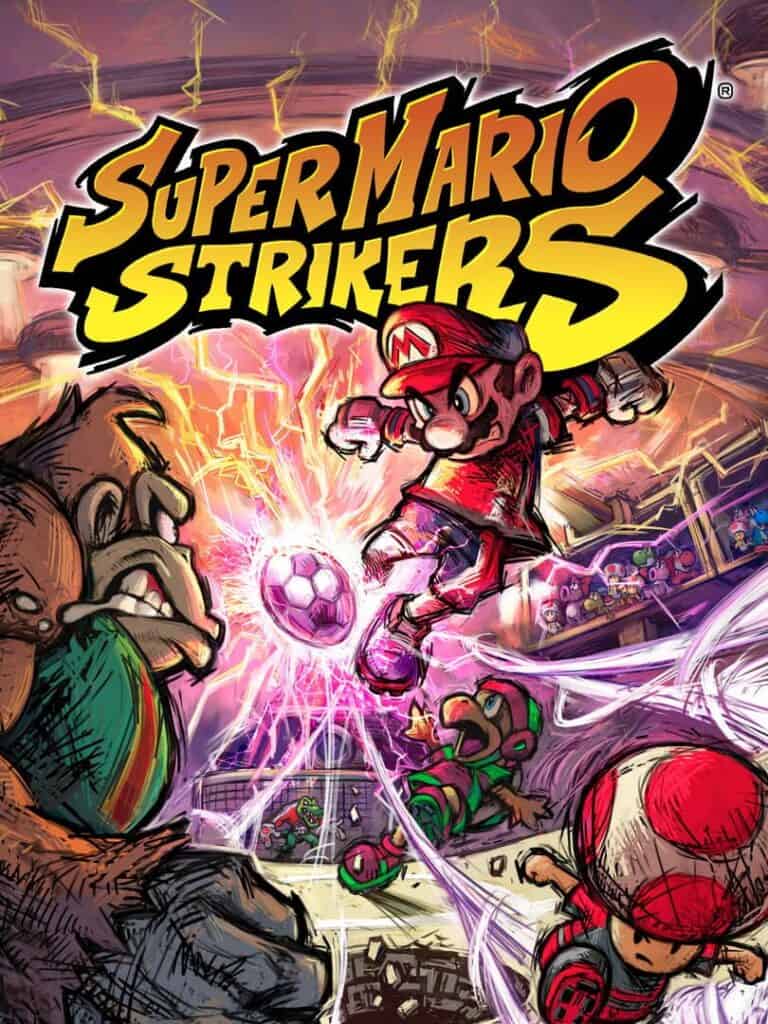
©Cover Art for Mario Strikers Battle League
Mario Strikers is an intense and action-packed sports game that combines soccer with the chaotic charm of the Mario universe. Players form teams of beloved characters, each with distinct stats and abilities, to play in high-stakes soccer matches. The game stands out for its fast-paced gameplay and the use of items and special moves, which add a layer of strategy and unpredictability. It’s more aggressive and competitive than traditional soccer, with a focus on quick scoring, fierce tackles, and spectacular, over-the-top special shots. It’s a game that emphasizes fun and flair over realism. Players looking for that should consider a FIFA title instead.
Super Mario Bros. Wonder (2023)
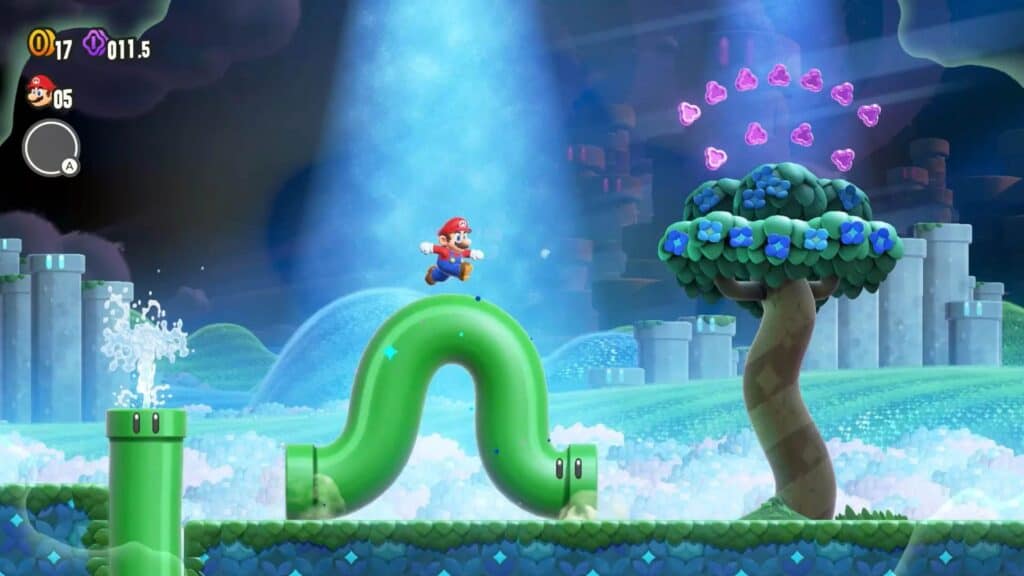
©Screenshot From Super Mario Bros. Wonder
Mario Bros Wonder is the most recent installment in the Mario universe. It is a platforming adventure that continues the legacy of the iconic Super Mario series. In this installment, Mario embarks on a new journey filled with innovative levels, power-ups, and challenges. The game is designed with creativity and imagination, offering a fresh take on the classic side-scrolling action. Players navigate through beautifully crafted worlds, each with its unique theme and mechanics. The game combines the familiar feel of Mario’s traditional gameplay with new elements and surprises, providing a delightful experience for both newcomers and long-time fans.
The image featured at the top of this post is ©Screenshot from Super Mario Odyssey Sombrero.
